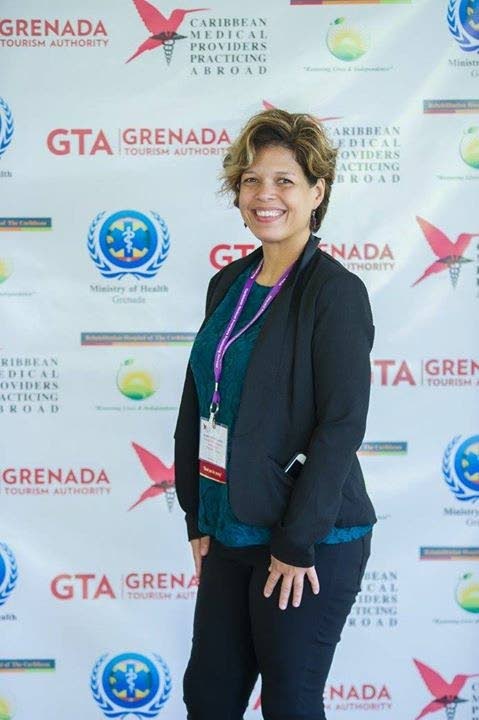
When a post cosmetic surgery client came to Karie-Ann de Gannes with painful swelling and disappointed hopes, the certified lymphedema massage therapist felt as if she were experiencing deja vu. As a local practitioner in the field and a board certified massage therapist, De Gannes often works with clients recovering from cosmetic surgery procedures. This was not the first time she was hearing a story of patients struggling with complications and disillusionment. Clients have been coming to her more and more seeking advice because they have been receiving the wrong treatments to help with their recovery.
“The numbers have increased over the years,” De Gannes said.
She has observed that more people have been seeking out cosmetic surgery for various reasons. She said preparing for these types of surgery is helpful, and after the procedure, aftercare is essential. One of the recommended treatments for such patients is lymphedema massage therapy. The lymphatic system involves organs, vessels and tissues which work together to maintain fluid levels in the body. The lymph in this system transports waste out of the body. If the system does not work properly, it can induce oedema which is uncomfortable swelling caused by lymph build-up. A lymphatic massage is meant to push lymph through the body and reduce swelling and excess fluid.
“This is the preferred treatment for cosmetic surgery clients,” De Gannes explained.
A proper lymphatic massage before the procedure helps to prepare the body for a good healing outcome and decrease post operation swelling, stimulate internal and external wound healing and reduce and prevent scar tissue formation.
“Overall it reduces healing time.”
The massage helps get rid of excess anaesthesia post-operation and greatly improves blood and lymphatic circulation. Patients report that it reduces discomfort as well. It is particularly beneficial to patients recovering from post vaser lipo and any type of liposuction.
Many medical professionals encourage their post surgery patients to visit trained and licensed lymphatic massage therapists, but De Gannes has started meeting clients who are being directed to the wrong types of treatments.
“They seek out people who are not trained in lymphatic massage,” she observed.
“And they are sometimes treated with a procedure called incisional massage. This is not recommended for patients recovering from cosmetic surgery, and it is not necessary for healing.”
Patients who receive this treatment often report terrible and distressing pain during the process. There are also issues with other methods being used such as cavitation, radio frequency, wood therapy and vacuum, all of which should not be used post-op until a set period of time has passed.
De Gannes also recommends caution when using compression garments. These are specially constructed accessories which provide support for patients post-op and help reduce swelling and pain. These must be worn properly. Usually a therapist will help clients use them for maximum effect. De Gannes assists her clients in sourcing the items and showing them their proper use, but she is increasingly seeing people whose compression garments are not fitted correctly. In worst case scenarios, badly fitted garments could impede healing.
De Gannes is hoping that as more people in TT choose cosmetic surgery, they empower themselves to make sure they get the best care.
She recommends:
Researching cosmetic surgery practitioners carefully. She suggests patients seek out one of the many qualified and experienced practitioners out there. She advises researching possible choices carefully.
Following doctor’s orders. She explains proper management will help prevent issues like sereoma which is a build up of fluid in the body and fibrosis which is thickening and scarring of tissue.
Refusing to allow incisional massage and methods like cavitation, radio frequency, wood therapy and vacuum to be a part of treatment plans too soon after cosmetic surgery.
Finding an experienced and certified lymphatic massage therapist for aftercare.
“The massage itself tends to be gentle and light and should be a relaxing and comfortable procedure for the patient,” De Gannes said.
“Additionally, the reduction in discomfort and swelling immediately afterwards makes a lymphatic massage an even more enjoyable experience.”
Having reasonable expectations.
“Some people get so discouraged because they don’t immediately look the way they want to, but healing takes months and even then you’re not necessarily going to look like Kim Kardashian.”
Taking extra good care of the body. Follow the advice of the medical team about proper diet before and after the operation. Eat whole foods and make hydrating a priority.
“You won’t want to work this hard for that perfect you to spoil it all by not doing the best for you!”
Asking questions. De Gannes emphasises that cosmetic surgery patients should not be afraid to ask questions to ensure that all their concerns are met.
“It’s your body which is going through all these changes. Make sure you are comfortable with what is going to be done and advocate for the best possible care for yourself."
Karie-Ann De Gannes is a certified lymphedema therapist, the owner of Kneading to Relax and founder of the Lymphedema Association of TT.


